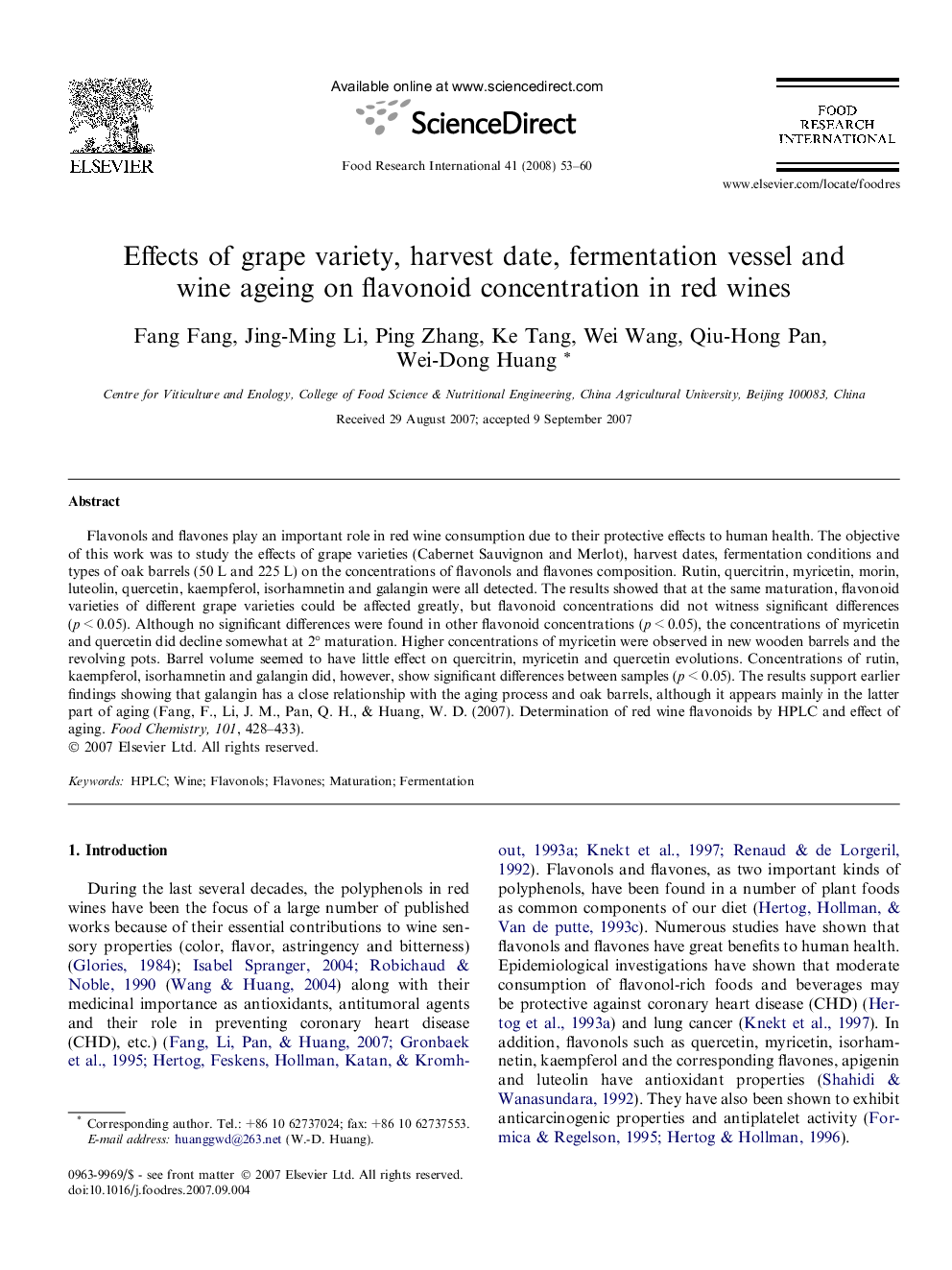| Article ID | Journal | Published Year | Pages | File Type |
|---|---|---|---|---|
| 4562895 | Food Research International | 2008 | 8 Pages |
Flavonols and flavones play an important role in red wine consumption due to their protective effects to human health. The objective of this work was to study the effects of grape varieties (Cabernet Sauvignon and Merlot), harvest dates, fermentation conditions and types of oak barrels (50 L and 225 L) on the concentrations of flavonols and flavones composition. Rutin, quercitrin, myricetin, morin, luteolin, quercetin, kaempferol, isorhamnetin and galangin were all detected. The results showed that at the same maturation, flavonoid varieties of different grape varieties could be affected greatly, but flavonoid concentrations did not witness significant differences (p < 0.05). Although no significant differences were found in other flavonoid concentrations (p < 0.05), the concentrations of myricetin and quercetin did decline somewhat at 2° maturation. Higher concentrations of myricetin were observed in new wooden barrels and the revolving pots. Barrel volume seemed to have little effect on quercitrin, myricetin and quercetin evolutions. Concentrations of rutin, kaempferol, isorhamnetin and galangin did, however, show significant differences between samples (p < 0.05). The results support earlier findings showing that galangin has a close relationship with the aging process and oak barrels, although it appears mainly in the latter part of aging (Fang, F., Li, J. M., Pan, Q. H., & Huang, W. D. (2007). Determination of red wine flavonoids by HPLC and effect of aging. Food Chemistry, 101, 428–433).
